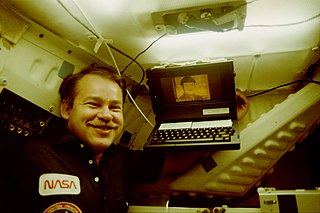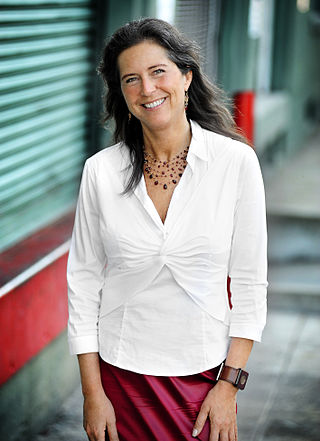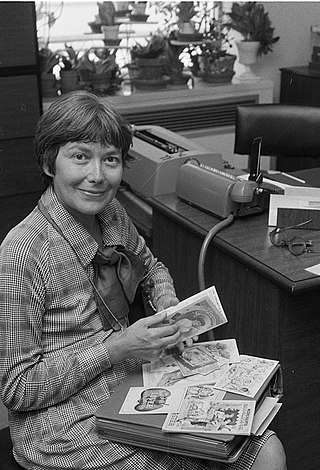
Cooper Hewitt, Smithsonian Design Museum is a design museum housed within the Andrew Carnegie Mansion in Manhattan, New York City, along the Upper East Side's Museum Mile. It is one of 19 museums that operate within the Smithsonian Institution and is one of three Smithsonian facilities located in New York City, the other two being the National Museum of the American Indian's George Gustav Heye Center in Bowling Green and the Archives of American Art New York Research Center in the Flatiron District. Unlike other Smithsonian museums, Cooper Hewitt is not free to the public and charges an admissions fee to visitors. It is the only museum in the United States devoted to historical and contemporary design. Its collections and exhibitions explore approximately 240 years of design aesthetic and creativity.

OXO is an American manufacturer of kitchen utensils, office supplies, and housewares, founded in 1990 and based in New York City. Oxo products are made in the USA and China. They provide a non-stick pro-Bakeware line that is completely made in the US. Some Oxo products come with a “made in China” tag.

William Grant Moggridge, RDI was an English designer, author and educator who cofounded the design company IDEO and was director of Cooper Hewitt, Smithsonian Design Museum in New York. He was a pioneer in adopting a human-centred approach in design, and championed interaction design as a mainstream design discipline. Among his achievements, he designed the first laptop computer, the GRiD Compass, was honoured for Lifetime Achievement from the National Design Awards, and given the Prince Philip Designers Prize. He was quoted as saying, "If there is a simple, easy principle that binds everything I have done together, it is my interest in people and their relationship to things."
The American National Design Awards, founded in 2000, are funded and awarded by Cooper-Hewitt, Smithsonian Design Museum. There are seven official design categories, and three additional awards. Supplemental awards can be given at the discretion of the jury or institution.

The Grid Compass is one of the first laptop computers.

Brionvega is an Italian electronics company that is known for manufacturing futuristic television sets and audio equipment, its contributions to post-second world war technological and social advancement in Italian industry, collaborations with well known industrial designers and architects, and its impact on the aesthetics of 1960s Italian design.

Ellen Lupton is a graphic designer, curator, writer, critic, and educator. Known for her love of typography, Lupton is the Betty Cooke and William O. Steinmetz Design Chair at Maryland Institute College of Art. Previously she was the Senior Curator of Contemporary Design at Cooper Hewitt, Smithsonian Design Museum in New York City and was named Curator Emerita after 30 years of service. She is the founding director of the Graphic Design M.F.A. degree program at Maryland Institute College of Art (MICA), where she also serves as director of the Center for Design Thinking. She has written numerous books on graphic design for a variety of audiences. She has contributed to several publications, including Print, Eye, I.D., Metropolis, and The New York Times.
Tucker L. Viemeister is an American industrial designer, and founder of Viemeister Industries in New York. Tucker helped found many important design businesses: Smart Design, frog design's New York studio, Razorfish's physical design group, Springtime-USA, and was chief of the lab at the Rockwell Group.
Paul Winthrop McCobb was an American modern furniture designer, textile designer, painter, and industrial designer.

Objectified is a feature-length documentary film examining the role of everyday non-living objects and the people who design them, in our daily lives. The film is directed by Gary Hustwit. Objectified premiered at the South By Southwest Festival on March 14, 2009.

Dorothy Wright Liebes was an American textile designer and weaver renowned for her innovative, custom-designed modern fabrics for architects and interior designers. She was known as "the mother of modern weaving".
Michael McCoy is an American industrial designer and educator who has made significant contributions to American design and design education in the latter half of the 20th century. McCoy is best known as the co-chair of the graduate program in Design at Cranbrook Academy of Art where he and spouse Katherine McCoy pioneered semantic approaches to design.
Patricia Moore is an American industrial designer, gerontologist, and author. She is one of the founders of the universal design philosophy.
Jhane Barnes is an American designer of clothing, textiles, eyeglasses, carpets and furniture, and the owner of the Jhane Barnes fashion design company. Barnes is known for incorporating complex, mathematical patterns into her clothing designs. She uses computer software to design textile patterns, which then translates the patterns into jacquard loom instructions, which are sent to mills to be woven into fabric.

Ivy Ross is an American business executive, jewelry designer, and, since July 2016, vice president of hardware design at Google. She has worked at Google since May 2014; prior to being appointed VP of hardware design, she led the Google Glass team at Google X. Ross's metal work in jewelry design is in the permanent collections of 12 international museums, including the Smithsonian in Washington D.C. One of few recognized fine artists to successfully cross over into the business world, Ross is also a keynote speaker and a member of several boards, and has been hailed as a “creative visionary” by the art world. In February 2019 she was named one of the 15 Most Powerful Women at Google by Business Insider. In July 2019 she was named #9 on Fast Company's 100 Most Creative People in Business. Ivy is the co-author of the New York Times bestselling book Your Brain on Art: How the Arts Transform Us with Susan Huganir Magsamen. This book shares the science behind humanities birthright - to make and behold art and its power to amplify physical and mental health, learning and build stronger communities.
Samuel Farber was an American industrial designer and businessman.
Stamen is a data visualization design studio based in San Francisco, California. Its clients include National Geographic, Facebook and The Dalai Lama.

Lisa Suter Taylor (1933–1991) was an American artist and museum director. Taylor served as the first director of the Cooper-Hewitt Museum of Decorative Arts and Design from 1969 to 1987, and was the first woman director of a museum within the Smithsonian Institution.

Maria Benktzon is a Swedish designer, she is known for industrial design with human factors. She is a co-founder of Ergonomi Design Gruppen which later became Veryday, an industrial design consultancy located in Stockholm. The company aimed to design improved everyday objects for the home and work. In November 2016, Veryday joined forces with McKinsey & Company, and today operates under the name "McKinsey Design."

Jay Sae Jung Oh is a South Korean-born, Seattle-based artist and designer. She is known for her sustainable and environmentally-friendly recycled plastic and leather cord furniture works notably, her Salvage Chair series made with everyday objects intricately hand wrapped in raw leather creating a unified a sculptural design object.












